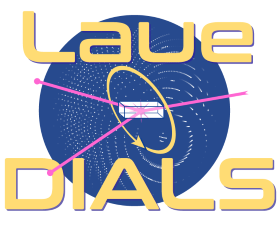laue_dials.predict
Introduction
This script predicts reflections for integration using a refined geometry experiment and reflection file.
This program takes a refined geometry experiment and reflection file, builds a DIALS experiment list and reflection table, and predicts the feasible set of reflections on the detector for integration using the refined geometry.
The output is a predicted reflection table (predicted.refl), which contains the necessary information for the integrator to locate predicted spots and integrate them.
Examples:
laue.predict [options] poly_refined.expt poly_refined.refl
Basic parameters
output {
reflections = 'predicted.refl'
log = 'laue.predict.log'
}
nproc = 1
wavelengths {
lam_min = None
lam_max = None
}
reciprocal_grid {
d_min = None
}
cutoff_log_probability = 0.
Full parameter definitions
output {
reflections = 'predicted.refl'
.help = "The output reflection table filename."
.type = str
log = 'laue.predict.log'
.help = "The log filename."
.type = str
}
nproc = 1
.help = "Number of parallel processes to run"
.type = int(allow_none=True)
wavelengths {
lam_min = None
.help = "Minimum wavelength for beam spectrum"
.type = float(value_min=0.1, allow_none=True)
lam_max = None
.help = "Maximum wavelength for beam spectrum"
.type = float(value_min=0.2, allow_none=True)
}
reciprocal_grid {
d_min = None
.help = "Minimum d-spacing for reflecting planes"
.type = float(value_min=0.1, allow_none=True)
}
cutoff_log_probability = 0.
.help = "The cutoff threshold for removing unlikely reflections"
.type = float(allow_none=True)
